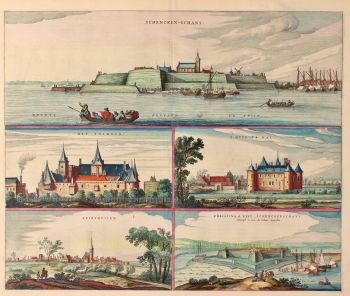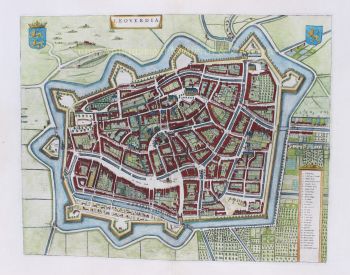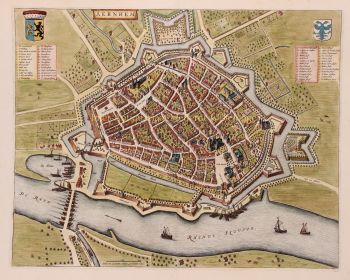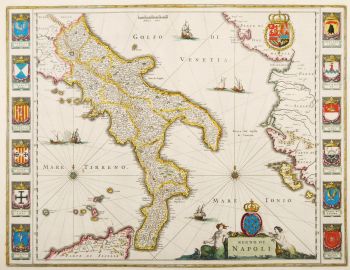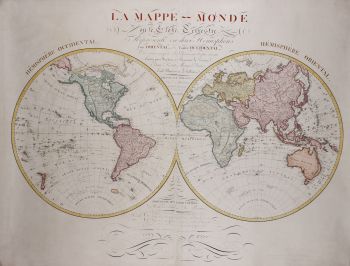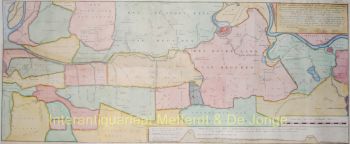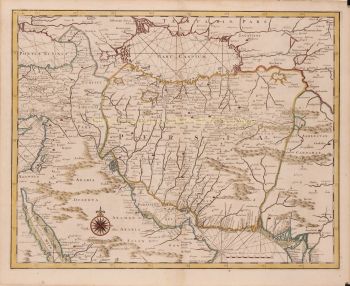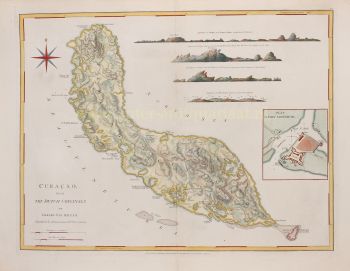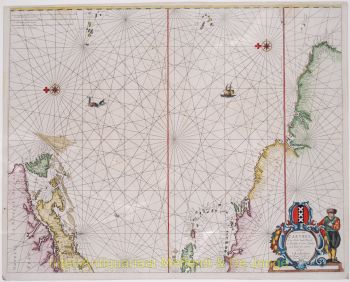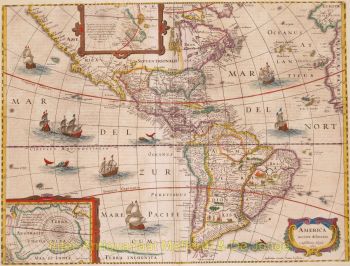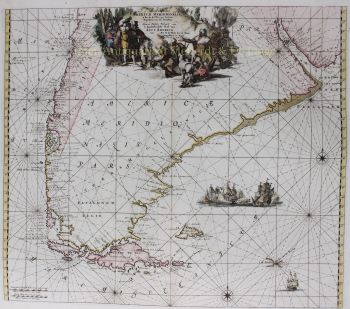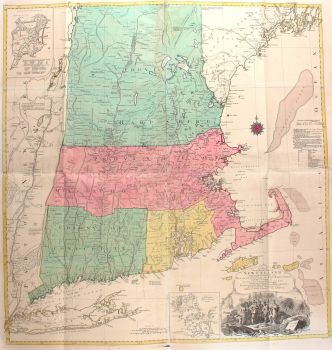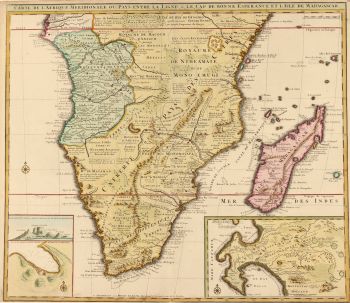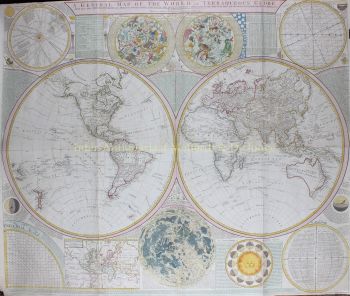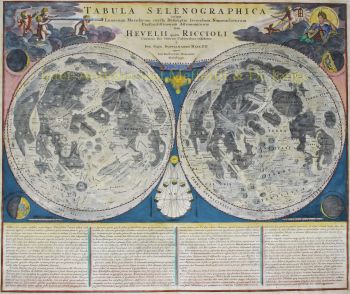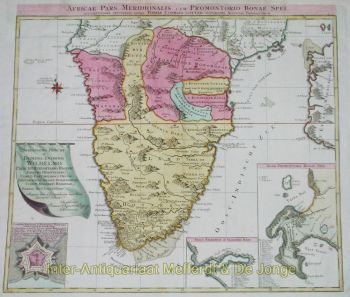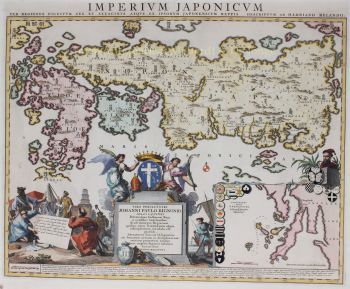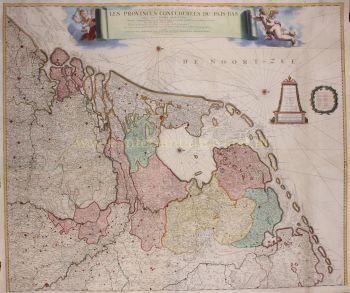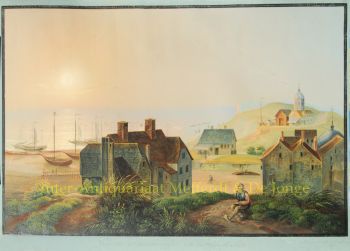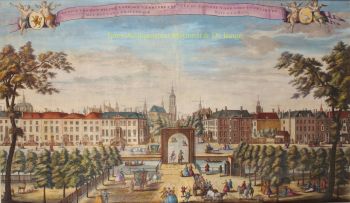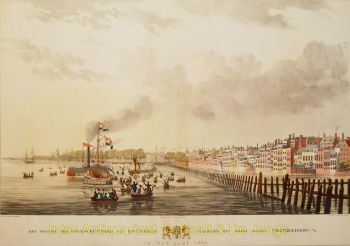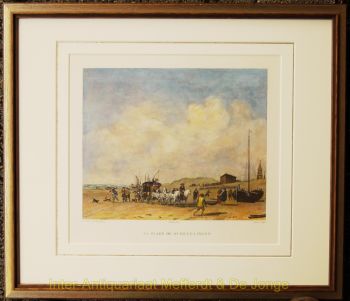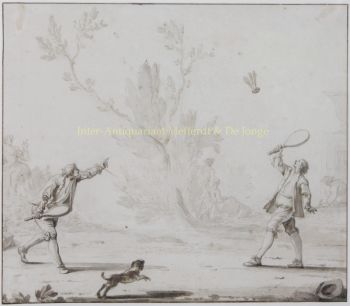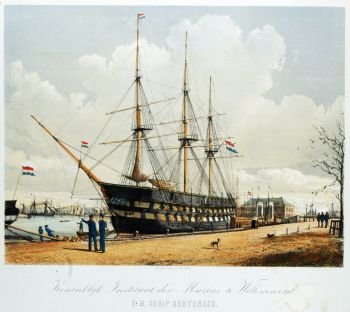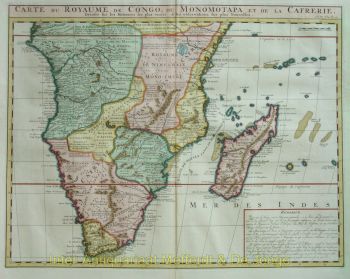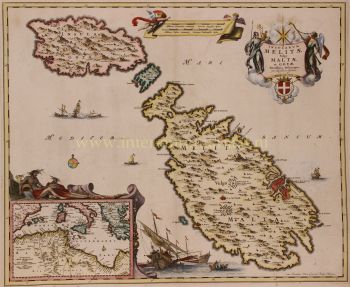Gouda 1649
Joan Blaeu
€ 850
Inter-Antiquariaat Mefferdt & De Jonge
- About the artworkGouda, kopergravure uitgeven door Joan Blaeu in 1649. Later met de hand gekleurd. De kaart werd vervaardigd voor de Latijnse editie van Blaeu’s beroemde stedenatlas “Het Toneel der Steden van de Vereenigde Nederlanden met hare Beschrijvingen”. Afm. (prent): 38,5 x 50,5 cm. De Amsterdamse cartograaf en uitgever Joan Blaeu stelde zich tot taak de doelstellingen van eerdere uitgevers Abraham Ortelius en Georg Braun en Franz Hogenberg tegelijk te realiseren, door aan zijn uit vele delen bestaande wereldatlas ook een aantal stedenboeken toe te voegen. Blaeu’s Toneel der Steden van de Vereenighde Nederlanden verscheen in 1649 in een Latijnse editie, in 1652 verscheen ook nog een Nederlandse editie. De in dit werk opgenomen kaarten waren voor een gedeelte al in oudere kaartwerken gepubliceerd; 21 stuks bijvoorbeeld in Boxhorns Theatrum Hollandiae uit 1632. Andere kaarten werden geheel nieuw voor Blaeu's stedenboek vervaardigd. Bekend is dat Blaeu brieven aan stadsbesturen richtte met het verzoek hem een stadsplattegrond en een beschrijving van de stad toe te zenden. Prijs E 850,-
- About the artist
Joan Blaeu (1596-1673), was born on the 23rd of September in 1596 in Alkmaar.
He was a Dutch cartographer born in Alkmaar. He followed the footsteps of his father, cartographer Willem Blaeu.
In 1620 he became a doctor of law but he joined the work of his father. In 1635 they published the Atlas Novus (full title: Theatrum orbis terrarum, sive, Atlas novus) in two volumes. Joan and his brother Cornelius took over the studio after their father died in 1638. Joan became the official cartographer of the Dutch East India Company.
Blaeu's world map, Nova et Accuratissima Terrarum Orbis Tabula, incorporating the discoveries of Abel Tasman, was published in 1648. This map was revolutionary in that it "depicts the solar system according to the heliocentric theories of Nicolaus Copernicus, which show the earth revolving around the sun.... Although Copernicus's groundbreaking book On the Revolutions of the Spheres had been first printed in 1543, just over a century earlier, Blaeu was the first mapmaker to incorporate this revolutionary heliocentric theory into a map of the world."
Blaeu's map was copied for the map of the world set into the pavement of the Groote Burger-Zaal of the new Amsterdam Town Hall, designed by the Dutch architect Jacob van Campen (now the Amsterdam Royal Palace), in 1655.
Blaeu's Hollandia Nova was also depicted in his Archipelagus Orientalis sive Asiaticus published in 1659 in the Kurfürsten Atlas (Atlas of the Great Elector). and used by Melchisédech Thévenot to produce his map, Hollandia Nova—Terre Australe (1664).
As "Jean Blaeu", he also published the 12 volume "Le Grand Atlas, ou Cosmographie blaviane, en laquelle est exactement descritte la terre, la mer, et le ciel". One edition is dated 1663. That was folio (540 x 340 mm), and contained 593 engraved maps and plates. In March 2015, a copy was on sale for £750,000.
Around 1649 Joan Blaeu published a collection of Dutch city maps named Toonneel der Steeden (Views of Cities). In 1651 he was voted into the Amsterdam council. In 1654 Joan published the first atlas of Scotland, devised by Timothy Pont. In 1662 he reissued the Atlas Novus, also known as Atlas Maior, in 11 volumes, and one for oceans.
A cosmology was planned as their next project, but a fire destroyed the studio completely in 1672.
Joan Blaeu died in Amsterdam the following year, 1673. He was buried in the Westerkerk at Amsterdam.
Are you interested in buying this artwork?
Artwork details
Related artworks
- 1 - 4 / 12
- 1 - 4 / 24
- 1 - 4 / 12





